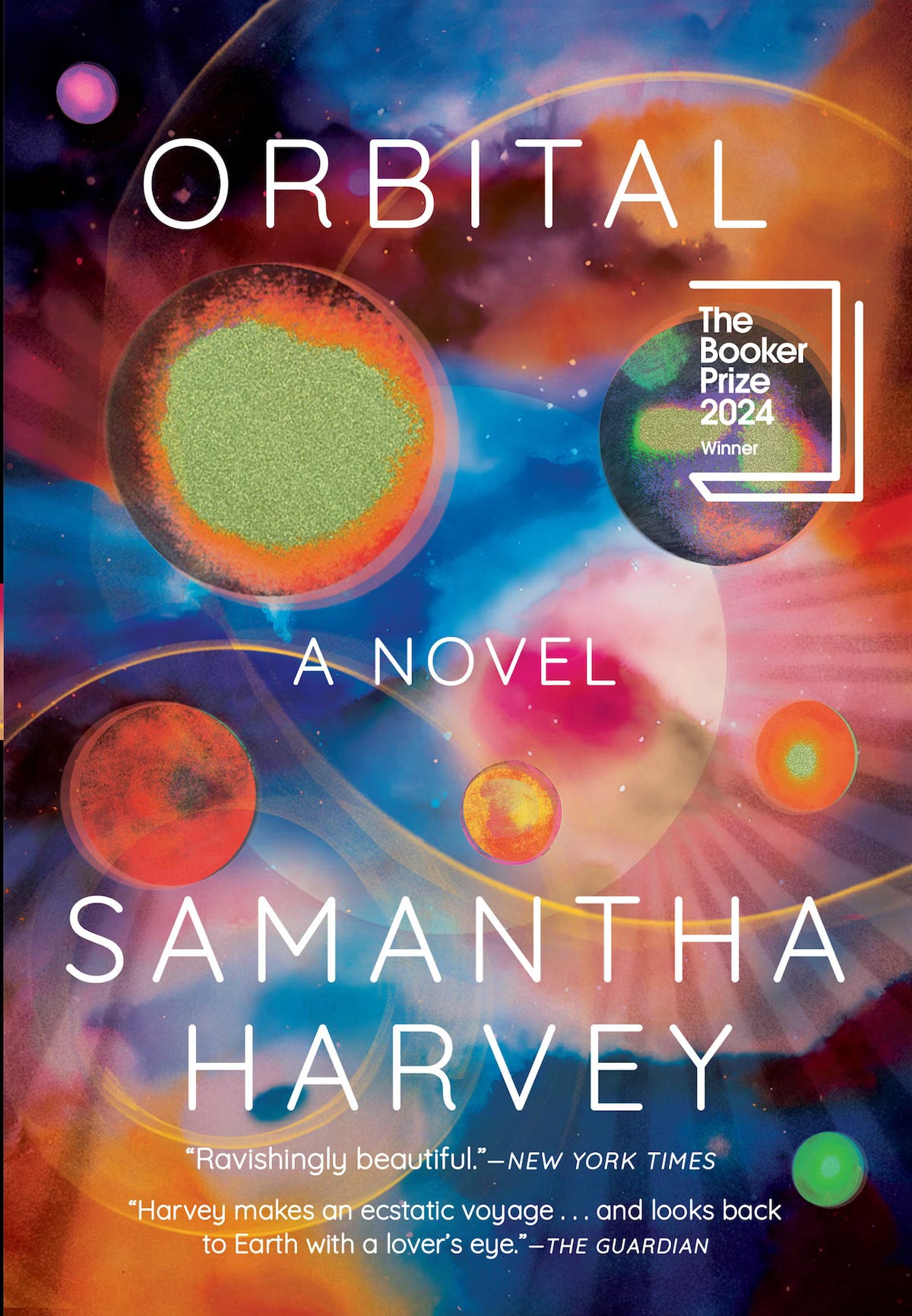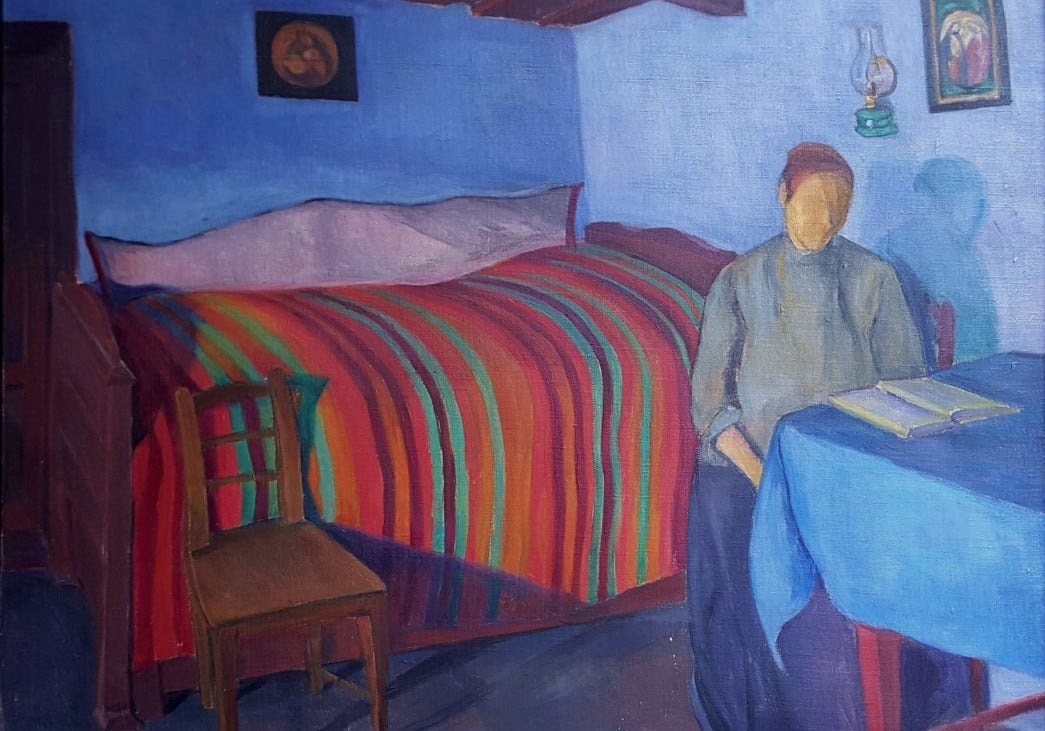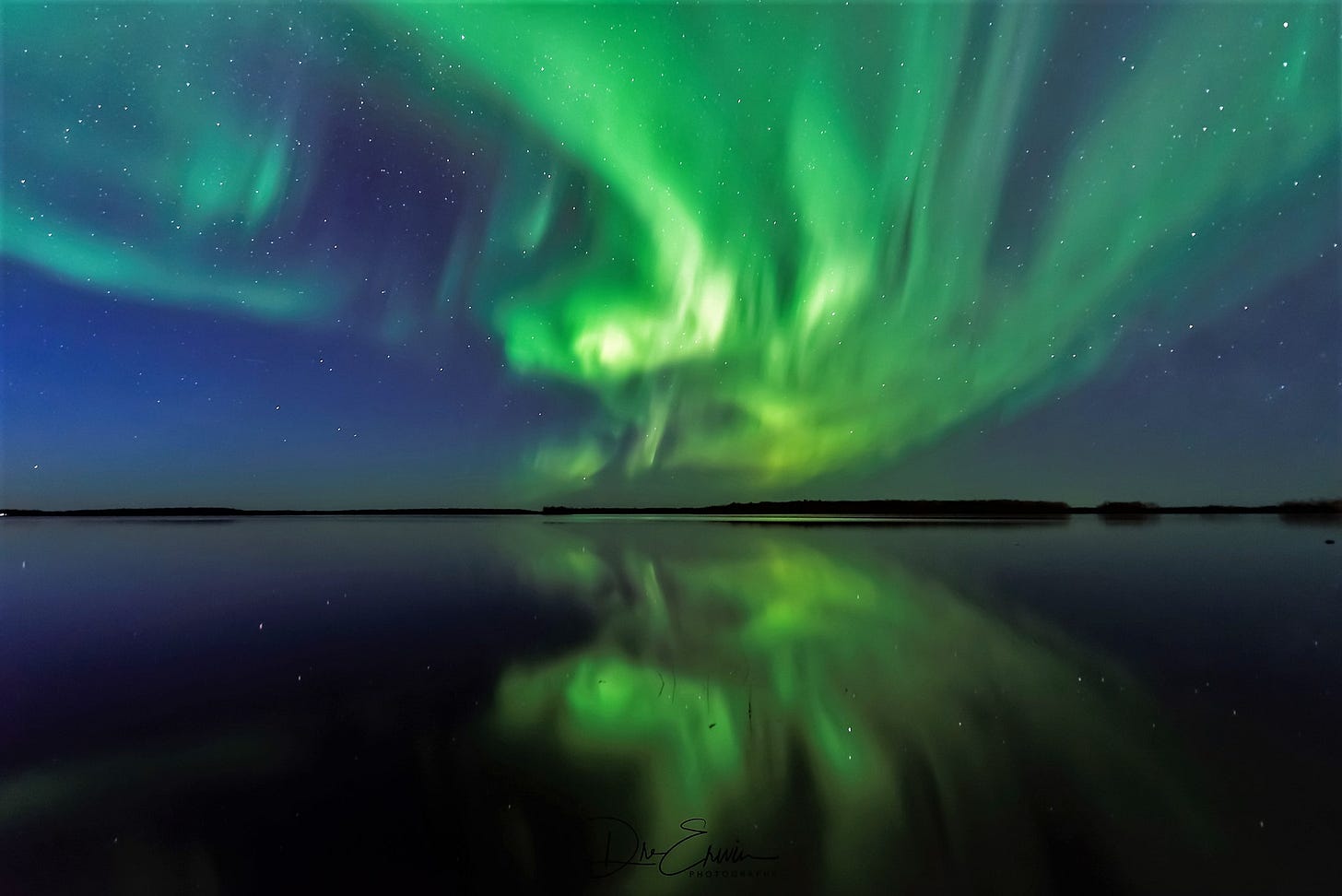Good evening!
I read two books this past week — Orbital, a work of literary fiction about six astronauts that won this year’s Booker Prize, and Material World, a nonfiction book focusing on six of Earth’s raw materials. I didn’t plan an “Earth” theme this week, but these two books complemented each other well. One is a contemplative reflection on Earth, space, humanity, and progress, while the second deals with the resources that fuel our world markets. Let’s get into it.
What I read:
Orbital by Samantha Harvey
Orbital follows the imagined daily lives of six astronauts aboard the International Space Station over the course of 24 hours as they orbit Earth 16 times. The chapters are organized by each orbit (with some orbits having two chapters — “ascending” and “descending”).
There are two women and four men aboard the station: Chie from Japan, Nell from the U.K, Shaun from the U.S., Pietro from Italy, and Roman and Anton from Russia. Orbital does not have a traditional plot, but we learn a bit about these characters’ home lives and get some insight into their internal philosophical debates. They receive personal news from Earth, some life-altering (on page 11, Chie learns that her mother has died) and some more routine (Nell’s brother gets the flu).
Most of the book is filled with accounts of the astronauts’ daily routines and their observations of Earth and space. The astronauts ask, “What’s a day?” In the “[p]ayless freak zone, surfing earth’s hurtling horizon,” it’s 16 sunsets and sunrises. Since space “shreds time to pieces,” they begin each day by tallying it. Then, the astronauts, strapped to their treadmills and bikes, work out rigorously for two hours to stave off muscular atrophy. They conduct microbial experiments, run tests on mice, and obtain samples from their own bodies. They clean the vents and repair leaks. In some ways, their lives are relatively mundane even as they speed through space at 17,500 miles per hour.
I decided to read Orbital after it won this year’s Booker Prize. I read most of it on a flight and didn’t know what to expect from this slim novel. I’m not sure if it was the air travel or if I was in a particularly reflective mood or if this book really just merited this response, but I teared up at points when reading it. The prose is rhythmic and hypnotic, and it has some of the best descriptive language I’ve come across. Take this description of the fourth orbit:
In the new morning of today’s fourth earth orbit the Saharan dust sweeps to the sea in hundred-mile ribbons. Hazy pale green shimmering sea, hazy tangerine land. This is Africa chiming with light. You can almost hear it, this light, from inside the craft. Gran Canaria’s steep radial gorges pile the island up like a sandcastle hastily built, and when the Atlas Mountains announce the end of the desert, clouds appear in the shape of a shark whose tail flips at the souther coast of Spain, whose fine-tip nudges the southern Alps, whose nose will dive any moment in to the Mediterranean. Albania and Montenegro are velvet soft with mountain.
This language is simultaneously anchoring and destabilizing. The world is small and yet unfathomably vast. Much of this book reads like a meditation, but then Harvey deftly walks the reader through a complex philosophical question. For instance, Nell contemplates her atheism and Shaun’s ardent belief in God. For her, the difference between believing in God and not is “both trivial and insurmountable,” like walking past a realistic sculpture of a tree in a forest not realizing it was man-made:
You couldn’t tell it apart from the other bare, wintry trees, except that once you knew it was an artwork it pulsed with a different energy, a different atmosphere. This feels to her what separates her universe and Shaun’s — a tree made by the hand of nature, and a tree made by the hand of an artist. It’s barely any difference at all, and the profoundest difference in the world.
Harvey explores perspective throughout the book. It is introduced early on through Shaun’s postcard of Diego Velázquez’s disorienting painting Las Meninas, which depicts multiple subjects. Velázquez is at his easel painting, looking at the viewer. There is a mirror reflecting the king and queen, who are looking at their daughter, her ladies-in-waiting, and a dog. A bodyguard and chaperone for the princess look on, and a man is mid-stride in the doorway, looking back at the viewer. Who or what is the subject? Is the subject even depicted in the painting, or is it us, the viewers? Or is it something else entirely?
Are we part of the scene, or are we its creator? Harvey picks up this question again and again. Anton recalls the famous photograph taken by Michael Collins in 1969 during the Moon landing: “There’s the lunar module carrying Armstrong and Aldrin, just behind them the moon, and some two hundred and fifty miles beyond that the earth.” It is said that Collins is “the only human being not in that photograph.”
But Anton notes: “In truth, nobody is in the photograph, nobody can be seen . . . The strongest, most deducible proof of life in the photograph is the photographer himself . . . he is really the only human presence it contains.”
I loved this book. It’s gorgeously written, utterly original, and completely immersive. However, I would not necessarily recommend this book to everyone. I could see someone else rolling their eyes at Orbital and dismissing it as a type of indulgent Google Earth travelogue (and I wouldn’t judge anyone for thinking that). While it is a short book, it is dense and demands to be read slowly. I think you have to enjoy descriptive prose and be in a reflective mood when reading this. But if you’re up to it, Orbital is definitely worth it.
Rating: 5/5
Genre: Literary Fiction; Science Fiction
Notable prizes/book clubs/lists: Man Booker Prize Winner (2024)
Page count: 136 pages
Audio: 5 hr 7 min
Movie/TV pairings: Gravity
Material World: The Six Raw Materials That Shape Modern Civilization by Ed Conway
In Material World, Conway identifies the six materials he believes are the most critical to the making of the modern world: sand, salt, iron, copper, oil, and lithium. While it may feel like we live in “the ethereal world” of information, we are more dependent than ever on the “material world.”
Glass, concrete, and silicon are all made from sand. These materials form the basis for modern building construction (today’s construction is 80% concrete) and the backbone for the internet and our electronics through silicon chips and fiber-optic cables. Chlorine, extracted from salt through electrolysis, is used to purify the water we drink and provides the chemical foundations for countless medicines. Steel from iron supports our buildings, ships, and bridges. Copper wires form the basis of our electric grids and our electronics (our phones contain about 6 grams of copper). Foods, plastics, fertilizers, and factories are all dependent on oil. Rechargeable batteries need lithium.
Conway traces the history of these resources and shows how they became integrated into our global supply chains. He weaves in some history and incorporates on-the-ground reporting from places like England (salt), Atacama (copper, sand, salt, lithium), and Australia (iron).
The history of global supply chains might sound boring, but this well-researched book is fascinating and relatively easy to read. Conway incorporates a wealth of information and presents it in a digestible format (even when describing complex manufacturing processes).
My main criticism is there is a lot of ground to cover in one book. One of my favorite reads of this past year was Chris Miller’s Chip War, about the history of the silicon chip. Conway skims the surface of that history here in the context of talking about all of the ways sand is a critical resource in our modern economy. Basically, this is more of a broad overview with a lot of fun facts and asides as opposed to a deep dive. There is so much information packed in Material World that I wonder what I will retain six months or a year from now. But overall, I thought this was an interesting read, even if it’s not a must-read.
Rating: 3.8/5
Genre: Nonfiction (Resources)
Page count: 512 pages
Audio: 15 hours 11 minutes
Articles I cannot stop thinking about:
“Brief, Brutal, and Gone” by Samantha Harvey
I read this article by Samantha Harvey (who wrote Orbital) about her time suffering from insomnia. This piece resonated with me, as I am a long-time insomniac.
I’m obviously still thinking about Orbital, and I loved looking at these shots of the northern lights from this past year.
Paul Mescal hosts SNL
Saturday Night Live’s take on a Gladiator musical sequel really made me laugh. As my friend said, the “you’ll know my name” part is so theater kid-coded.
What I cooked:
A simple meal of salmon, miso-ginger dressing, and rice.
I re-created a meal from the other week with my husband: steak with crying tiger sauce, Vietnamese cucumber salad, and rice.











